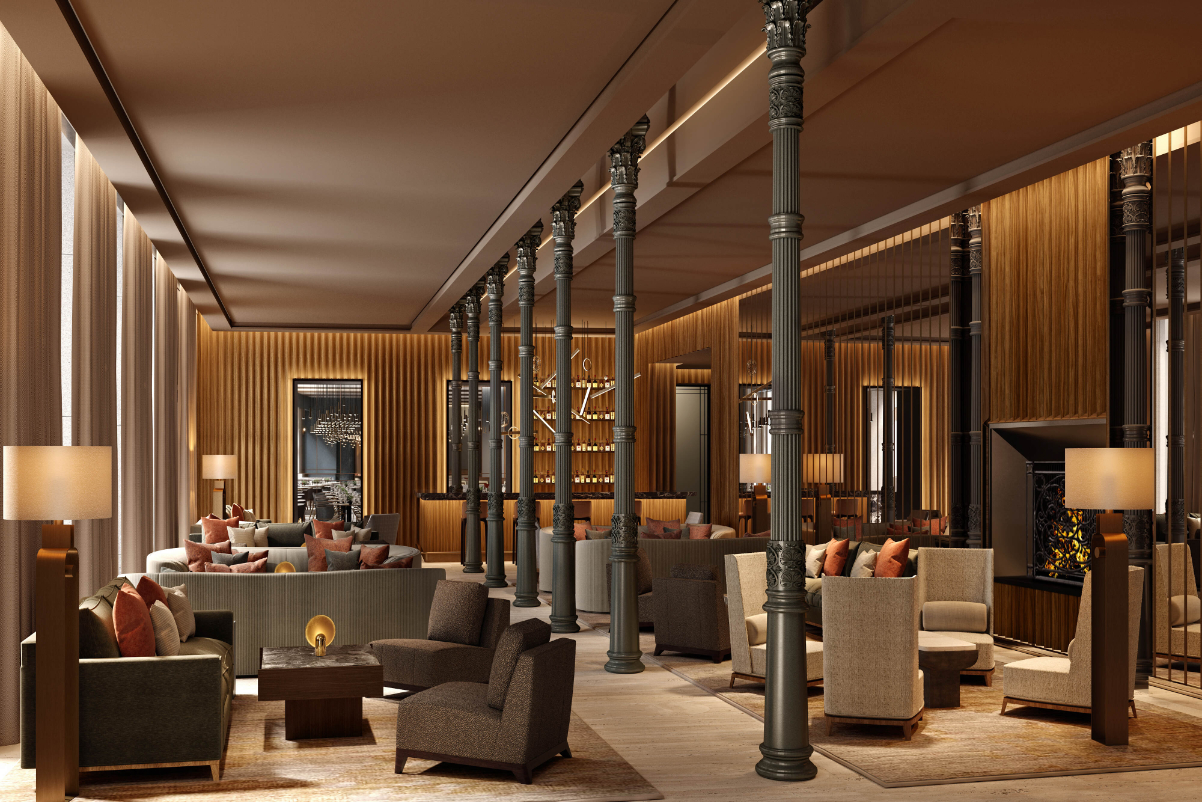Why Enterprise Hotel and Restaurant Companies Must Eliminate Payment Friction from the Guest Experience

Skift Take
This sponsored content was created in collaboration with a Skift partner.
Long before the pandemic, optimizing contactless cross-border payments had become a popular way for enterprise hotel and restaurant companies to keep costs manageable. Today, with safe, touchless, and hassle-free experiences in high demand, it’s more about the guest experience. Hotel and restaurant customers expect an array of contactless and contact-free payment solutions so they can travel with confidence and dine with peace of mind.
Having a payment strategy in place that factors in consumer preferences across different geographies is more important than ever. For example, a recent Alipay and Nielsen survey revealed that 92 percent of Chinese outbound tourists are “more likely to pay with a mobile phone if a merchant accepted Chinese mobile payment systems.”
SkiftX spoke with Michael Balzer, VP of Shiji Payment Solutions, about the importance of reducing transactional friction from the guest experience as the travel industry moves into 2021 and continues to chart a path toward recovery.
SkiftX: How did discussions around payments evolve from being about cost savings to being more about user experience?
Michael Balzer: Initially, payment discussions within the hospitality industry were managed by Finance and IT departments. With new technology coming into hospitality, especially around cloud-based property management systems (PMS) and point of sale (POS) systems, the focus shifted to become more operations driven. The questions became, ‘How do new cloud solutions impact hotel operations and what does it mean for the enterprise hotel and restaurant staff members?’ It wasn’t just about the technology anymore. It was more about the use cases for hospitality and food and beverage teams.
Around 2015, the focus also shifted to address consumer needs, transitioning payment and device preferences into the hotel and restaurant space. Today, the payment experience is still viewed as a cost item. It’s not that hospitality merchants will accept any fees, but if a slightly higher fee is combined with a better user experience that will result in more business, more transactions, and more revenue, higher payment-related fees are acceptable.
Following the situation with Covid-19, there’s been an accelerated need to implement contactless payment methods, not only for sanitary reasons, but also to improve guest experience and maintain guest confidence. That’s how the discussion has evolved.
SkiftX: Trust in the security of contactless payments has steadily grown. More and more, consumers expect transactions to be effortless. Is there a link between payment friction and negative brand perception?
Balzer: In many cases, payments for hotel and restaurant services are still too cumbersome. They should be invisible and painless, and not an area of concern for consumers. No guest questions whether or not they have to pay for a service they consumed, but clearly there is a disconnect, if the payment transaction process is the most time-consuming interaction between staff and guests during a hotel or restaurant visit. The more payments can be an invisible part of the process, the more consumers will have a better brand experience. And the more time the hotels and restaurants will be able to spend caring for guests.
If consumers can purchase anything on the web with one-click payment, why should a payment for a hotel or restaurant service be any different? Once the guest has determined whether they’re paying the right price, there’s no reason that the payment cannot be simplified to ‘one click’.
Contactless payments include a variety of methods, including credit cards, payments on NFC-enabled devices using e.g. ApplePay and GooglePay, and payments by QR codes, such as Alipay and WeChat pay. We need to keep moving toward making payments invisible by pushing contactless transactions via mobile apps and by offering the payment types and methods the specific guest prefers, which can differ by age group and region.
For example, some markets are already familiar with contactless payment experiences, such as London with the Tube and Hong Kong with the MTR, so adding other payment options to this established contactless experience is simple and accepted. In addition, consumers from Asia, who are familiar with QR code payments, are more accepting of QR code payments during travel. The same can be said for the younger generation, between ages 20 and 35, because they’re accustomed to using QR codes on their mobile phones.
The hotel and restaurant brands that enable this invisible payment experience will attract the consumers that value the seamless approach. You’ll still have guests who like to go to the front desk and chat with the staff while they pay, but you’ll also have guests who don’t want to speak to anyone. If you can’t cater to them, they’ll move to a brand that can, and then quickly share their experience on social media.
SkiftX: How is the payments industry adapting to current challenges?
Balzer: For service providers like us, it’s all about being there for the merchant, guiding and helping them through this business downturn, and more importantly, being there when hotels and restaurants get back to business as usual.
The biggest trend right now is the drive from ‘contact payments’ (entering a card into a payment device) to ‘contactless payments’ (using the contactless NFC reader on payment devices and enabling ApplePay, for example). The next step is ‘contact-free payments’, which puts the whole process into the consumer’s hand while integrating seamlessly into the various front-end hospitality systems, such as PMS, POS, and Kiosk.
Contactless payments are a given now in the market, and every payment provider can offer some kind of solution to merchants, but contact-free payments require an even deeper integration between front-end hospitality systems and payment providers.
SkiftX: Can you outline the primary challenges faced by hotels today? How can these challenges be overcome?
Balzer: A mix of challenges have developed over time, including the need for more modern hotel operation systems and business applications that can adapt to changing needs. There’s also a need for modern payment providers that can support a seamless acquiring experience for the hotel on all channels, from online travel agencies to PMS and POS systems. Hotels that want to be more guest-focused need to align their operational processes so that guests fully understand all of the payment options available to them. These solutions should be considered alongside the need for contactless payment systems that can help reassure travelers that the right sanitary standards are in place.
SkiftX: What are the key differences in the way Western vs. Eastern hospitality companies are responding to these challenges?
Balzer: Different regions put a different priority order on the challenges outlined above, or they accept that certain challenges cannot be easily tackled.
For example, in Europe, the focus might be on modern business applications combined with new payment technologies to ensure that the guest experience is complete, modern, and appealing, especially with new hotel openings. Meanwhile, in North America, investments in new business applications are sometimes approached more cautiously, and improvements toward seamless acquisition and guest-focused experiences are often dependent on how well they fit into existing systems. In Asia Pacific, there’s a specific focus on catering to a wide array of alternative payment methods, which are more prominent in Asia Pacific than elsewhere.
Despite the different ways that companies in these regions look at these challenges and prioritize solutions, the final result is usually the same. They all want to build a great hospitality experience.
SkiftX: How will QR-code payments continue to evolve as the industry charts a path to recovery, and as consumers become more accustomed to frictionless payment experiences?
Balzer: Driven by Alipay and WeChat Pay, QR code payments are mainly utilized in Asia. Companies such as GrabPay, Boost, LinePay, and MacauPass are leveraging QR code technology to promote these payment methods. Outside of Asia, QR code payments are used in a limited way, if at all. In the United States, retailers like Starbucks have their own mobile app with QR code payment capabilities that are widely used within their own brands, but not as a general payment method for other retailers.
QR code payments are making in-roads into regions outside of Asia on the back of tourists who are asking for QR code payment methods when they travel to Europe and the United States, but this will be a slower process than it has been due to limited travel in the wake of the pandemic.
More regions will eventually see that QR code payments are popular with consumers, and they’ll go down that path as they continue to improve guest experience. While this is certainly happening, the immediate trend in Europe and the United States is to push for contactless payments, which are now increasing rapidly.
A first step towards contact-free payments in many markets will be to have a consumer’s mobile phone read a QR code (to order food at a restaurant, for example), and then go through the payment process on the phone. When consumers become more and more familiar with this process, as they are during this time of social distancing, the next step to QR-initiated payments is small.
SkiftX: What makes you optimistic about the future of hospitality?
Balzer: The desire to travel and discover new things is human nature, so I’m quite optimistic that we will learn from current events and adapt.
Payments is one area where we can learn a lot, not just about implementing contact-free solutions for sanitary reasons, but also to greatly improve the guest experience. The check-in and check-out process, which has long been the source of negative guest experience, will improve as a result. Implementing new payment systems will help remove stress from hotel and restaurant staff members as well.
The pandemic has triggered an increased interest in new technology and alternative payment solutions, so this is a positive trend. While not everyone will be ready to make a full switch to cloud-based business applications, new payment solutions and payment types can be implemented more quickly. Nine months ago, adding contactless payment solutions was not a priority (in the United States, for example), but this has been a major push over the past several months. As this trend continues, we’ll see better technology solutions that address the full customer journey for hotel and restaurant businesses.
I’m optimistic that the focus has shifted, and that the hospitality market is actively focusing on how to come out of this pandemic, better positioned for what will be the next normal.
This content was created collaboratively by Shiji and Skift’s branded content studio, SkiftX.




